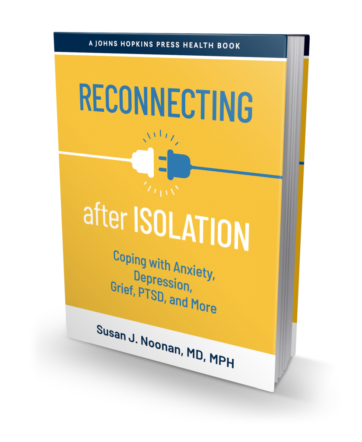There’s a new concept in mental health: difficult-to-treat depression. It’s intended to replace the concept of treatment-resistant depression, widely used for many years to capture those who experience a chronic and recurrent illness and don’t achieve sustained remission (complete relief of symptoms) despite adequate treatment. One reason behind the new model is that the word “resistant” is thought to have negative connotations and suggests the person is to blame for being resistant to treatment efforts, which is definitely not true! A second concern is that treatment with a series of medication trials that may be unlikely to achieve remission is wasted effort, puts an undue burden on the individual and creates undesirable side effects.
The current phrase, treatment-resistant depression (TRD), is complex and hard to define, with no universal agreement. It is most often considered a failure to respond to at least two adequate courses of antidepressant medication. Yet this definition does not align with current clinical practice that includes psychotherapy as a fundamental treatment option, neurostimulation treatments (ECT, rTMS, Vagus Nerve Stimulation) or the newer use of ketamine and esketamine, all of which change the treatment response rates. TRD also does not consider factors that make depression more complicated to treat, such as the person’s degree of functional impairment, depression sub-type, co-morbidities and psychosocial stressors. Recent innovations, such as the use of clinical genomics to tailor optimal dose and type of antidepressant medication, the impact of modifiable lifestyle factors (sleep, diet, exercise, social isolation) on depression, and our understanding of systemic inflammation as risk factors for depression, are also not reflected in the current TRD definition and statistics.
The new model, difficult-to-treat depression (DTD), is defined as “depression that continues to cause significant burden despite usual treatment efforts.” What does that mean? “Significant burden” is subjective and will vary by person. “Usual treatment efforts” depends on the local health care setting, treatment guidelines and practice and thus will also vary. DTD, based largely on expert consensus, is founded on the belief that full resolution of depression symptoms might not be achievable in some people. Thus it shifts the focus away from a goal of remission to one of optimal symptom control and functional improvement where the inconvenience, side effects and burden of repeated treatments on patients’ lives are minimized.
There are many good provisions in the DTD model and I respect the leaders in psychiatry who support it. Mental health experts have recognized the need for a balance between alleviating severity, reversing what is reversible and being prepared to step back at times while maintaining hope and realistic goals. It’s reassuring to know that before declaring “remission is not possible” and assigning this designation to someone, the provider is expected to do a comprehensive evaluation of all treatable causes of the presenting symptoms and confirm correct diagnosis, adequate treatment (dose and duration) and prior adherence to treatment; consider the pharmacogenetics; and assess general medical and psychiatric co-morbidities and psychological stressors (environmental factors) that may have gone unrecognized.
The DTD process includes self-management strategies and collaborative shared decision making when considering treatment options (as advocated by an international consensus statement on DTD). The goal is then to use all available interventions to evaluate and manage the person’s symptoms. Only then, when these steps are not effective, should the DTD designation be applied. If a person is thought to have DTD, it is expected that he or she will receive a thorough re-evaluation of his symptoms annually and be offered new treatments in development as they are made available.
I wonder about the implementation of the new DTD diagnosis and treatment guidelines and the challenges it presents. How should remission from depression be defined? Who decides what a clinically meaningful benefit is? How, when and for whom should a provider shift the focus from remission to “controlling symptoms and restoring function?” Who determines how much treatment is “enough” for any one person? Addressing these questions is a task that requires exceptional clinical skills and judgment.
Might I suggest we modify our thinking on this to “the steps to remission are not yet identified for this person” with the view of depression as “treatable with challenges.” I would expect that the person be involved in all discussions and decisions in a patient-centered shared decision-making collaborative model. When given adequate information, the person is better able to determine what he is willing to do, what is beneficial and important to him. Then I would leave it to him to decide how far to go and when to stop treatment trials and “manage” his symptoms. I would also require a periodic re-evaluation of the person’s symptoms and preserve his right to resume active treatment at a later date.
One thing I know for sure: I would not be here today if my treatment team regarded me as resistant and did not continue to tirelessly search for creative, out-of-the box, cutting edge treatments for my severe depression, which eventually worked! I was fortunate, as this may not have happened outside of academic psychiatry or in settings where providers may not be as aware of off-label or newer treatments. I have often been reminded that in life you never know what is coming around the corner, including new treatment possibilities. All persons deserve to have this hope.
My hope is that all mental health providers will apply the label difficult-to-treat depression judiciously.
Stay well!
A modified version of this article was recently published in Psychology Today.

